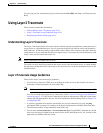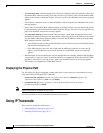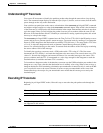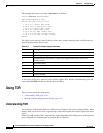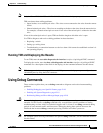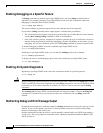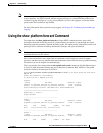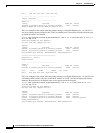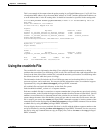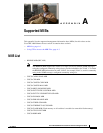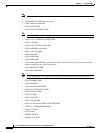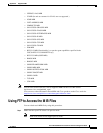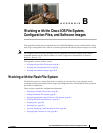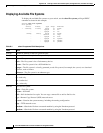
42-21
Cisco ME 3400 Ethernet Access Switch Software Configuration Guide
OL-9639-06
Chapter 42 Troubleshooting
Using the crashinfo File
This is an example of the output when the packet coming in on Gigabit Ethernet port 1 in VLAN 5 has
a destination MAC address set to the router MAC address in VLAN 5 and the destination IP address set
to an IP address that is in the IP routing table. It should be forwarded as specified in the routing table.
Switch# show platform forward gigabitethernet0/1 vlan 5 1.1.1 03.e319.ee44 ip 110.1.5.5
16.1.10.5
Global Port Number:24, Asic Number:5
Src Real Vlan Id:5, Mapped Vlan Id:5
Ingress:
Lookup Key-Used Index-Hit A-Data
InptACL 40_10010A05_0A010505-00_41000014_000A0000 01FFA 03000000
L3Local 00_00000000_00000000-90_00001400_10010A05 010F0 01880290
L3Scndr 12_10010A05_0A010505-00_40000014_000A0000 01D28 30090001_00000000
Lookup Used:Secondary
Station Descriptor:F0070007, DestIndex:F007, RewriteIndex:0007
==========================================
Egress:Asic 3, switch 1
Output Packets:
------------------------------------------
Packet 1
Lookup Key-Used Index-Hit A-Data
OutptACL 50_10010A05_0A010505-00_40000014_000A0000 01FFE 03000000
Port Vlan SrcMac DstMac Cos Dscpv
Gi0/2 0007 XXXX.XXXX.0246 0009.43A8.0147
Using the crashinfo File
The crashinfo file saves information that helps Cisco technical support representatives to debug
problems that caused the Cisco IOS image to fail (crash). The switch writes the crash information to the
console at the time of the failure, and the file is created the next time you boot the Cisco IOS image after
the failure (instead of while the system is failing).
The information in the file includes the Cisco IOS image name and version that failed, a list of the
processor registers, and a stack trace. You can provide this information to the Cisco technical support
representative by using the show tech-support privileged EXEC command.
All crashinfo files are kept in this directory on the flash file system:
flash:/crashinfo/crashinfo_n where n is a sequence number.
Each new crashinfo file that is created uses a sequence number that is larger than any previously existing
sequence number, so the file with the largest sequence number describes the most recent failure. Version
numbers are used instead of a timestamp because the switches do not include a real-time clock. You
cannot change the name of the file that the system will use when it creates the file. However, after the
file is created, you can use the rename privileged EXEC command to rename it, but the contents of the
renamed file will not be displayed by the show tech-support privileged EXEC command. You can delete
crashinfo files by using the delete privileged EXEC command.
You can display the most recent crashinfo file (that is, the file with the highest sequence number at the
end of its filename) by entering the show tech-support privileged EXEC command. You also can access
the file by using any command that can copy or display files, such as the more or the copy privileged
EXEC command.



